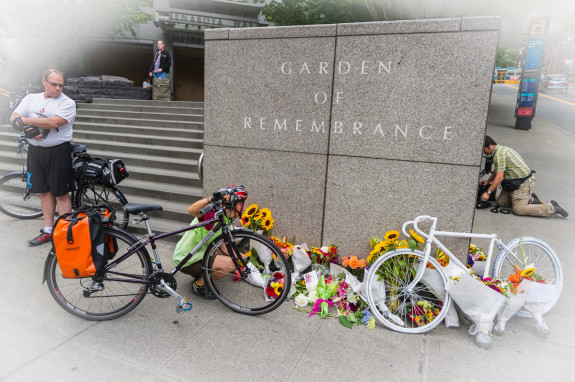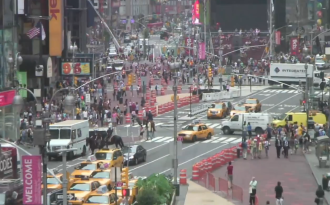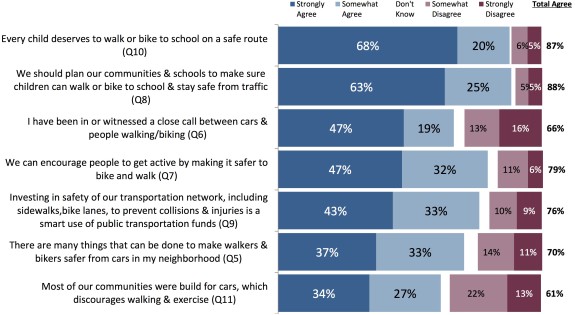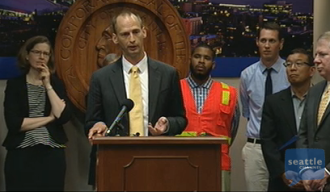
Just one wrong turn — one missed glance into bike lane on 2nd Ave — and a man driving a box truck struck and killed Sher Kung Friday. By witness accounts, the man driving the truck jumped into action and tried to help her, but became distraught when he realized it was too late. He made a left turn right in front of her while she biked in the skinny painted bike lane, and it killed the young mother.
The outpouring of grief has been remarkable. It comes from those who watched it happen, those who knew her and those who bike downtown every day and know that it could have easily been them instead of Kung. A flower memorial sprung up within hours of the deadly collision, and a couple ghost bikes followed shortly.
The corner where she died is also the site of the Garden of Remembrance, a memorial to Washington residents who have given their lives in military service. And though Sher Kung did not die on a battlefield, her young legacy will live on through the lives of American service members who can now be true to themselves while wearing their uniforms.
Kung worked as a legal fellow for the ACLU and helped win a case that was instrumental in the repeal of Don’t Ask, Don’t Tell. An AP photographer took this shot of Kung standing next to Margaret Witt after a federal judge ruled that Witt must be reinstated to the rank she had earned before she was discharged for being gay. (more…)











